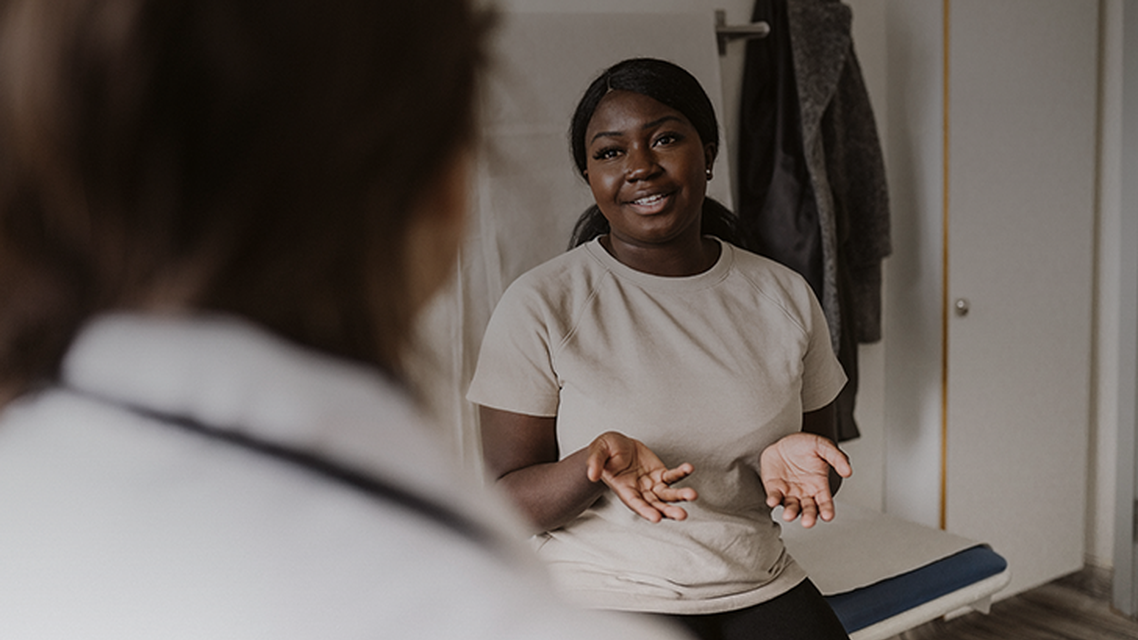Global Women's Health Academy

Announcer:
Welcome to Clinician’s Roundtable on ReachMD. On this episode, sponsored by Cepheid, we’ll take a look at how we can address unmet needs for patients with vulvovaginitis with Dr. Tosin Goje, who’s an Associate Professor of Obstetrics/Gynecology and Reproductive Biology at the Cleveland Clinic's Lerner College of Medicine at Case Western Reserve University. She’s also a board-certified OB/GYN and infectious disease specialist with the Cleveland Clinic's Obstetrics, Gynecology, and Women's Health Institute in Cleveland, Ohio.
Here's Dr. Goje now.
Dr. Goje:
Prevalence and epidemiology of vulvovaginitis should be discussed to understand the problem. Seventy-five percent of all reproductive-age women will have at least one yeast infection in their lifetime, and up to 15 percent of women will have recurrent yeast infection. Globally, bacterial vaginosis has been documented in 23 to 29 percent of women. And in the United States, there is a disparity in the prevalence of bacterial vaginosis, with blacks and Hispanics having the highest burden of vulvovaginitis. Trichomoniasis has been underreported and underdiagnosed. It tends to occur in women in their late 30s and 40s, and there is also a disparity with black women having the highest burden of trichomoniasis.
The unmet needs of patients with vulvovaginitis are, one, timely and accurate diagnosis, and, two, availability of medications for the treatment of vulvovaginitis. We have had the same medications for the treatment of bacterial vaginosis and trichomoniasis for so many years, for decades. And this all leads to barriers because patients become frustrated. It increases the financial burden to the patient, the health system, and the nation, and it also has a lot of social, psychosocial, and sexual impact on the life of the patient.
We should look at strategies to improve the therapeutics we have for the treatment of both acute and chronic vulvovaginitis. We need to also have nonantibiotic therapeutics, like pre and probiotics. And we should start looking at innovative ways to also prevent vulvovaginitis in patients. There is the need to also have better, more sensitive diagnostic techniques with a rapid turnover so that a patient who goes into a healthcare center or institution can get the accurate results immediately and be able to start medications immediately. That will reduce the long-term burden of vulvovaginitis in reproductive-age women.
Announcer:
This episode of Clinician’s Roundtable was sponsored by Cepheid. To access other episodes in this series, visit ReachMD.com/Clinicians-Roundtable, where you can Be Part of the Knowledge. Thanks for listening!
Recommended
The Role of Cannabis in Medicine: Canceling Chronic Pain & Combating the Opioid Crisis
The Role of Cannabis in Medicine: Canceling Chronic Pain & Combating the Opioid Crisis
Clinician's RoundtableThe Role of Cannabis in Medicine: Canceling Chronic Pain & Combating the Opioid Crisis
Epigenetics in the Environment: An Exploration of Genetics & Chronic Health Conditions
Epigenetics in the Environment: An Exploration of Genetics & Chronic Health Conditions
Clinician's RoundtableEpigenetics in the Environment: An Exploration of Genetics & Chronic Health Conditions
Discussing Drug Diversion: An Exploration of Impact & Prevention Through Smart Data
Discussing Drug Diversion: An Exploration of Impact & Prevention Through Smart Data
Clinician's RoundtableDiscussing Drug Diversion: An Exploration of Impact & Prevention Through Smart Data
A Pediatrician’s Perspective on Treating Transgender Adolescents
A Pediatrician’s Perspective on Treating Transgender Adolescents
Clinician's RoundtableA Pediatrician’s Perspective on Treating Transgender Adolescents









